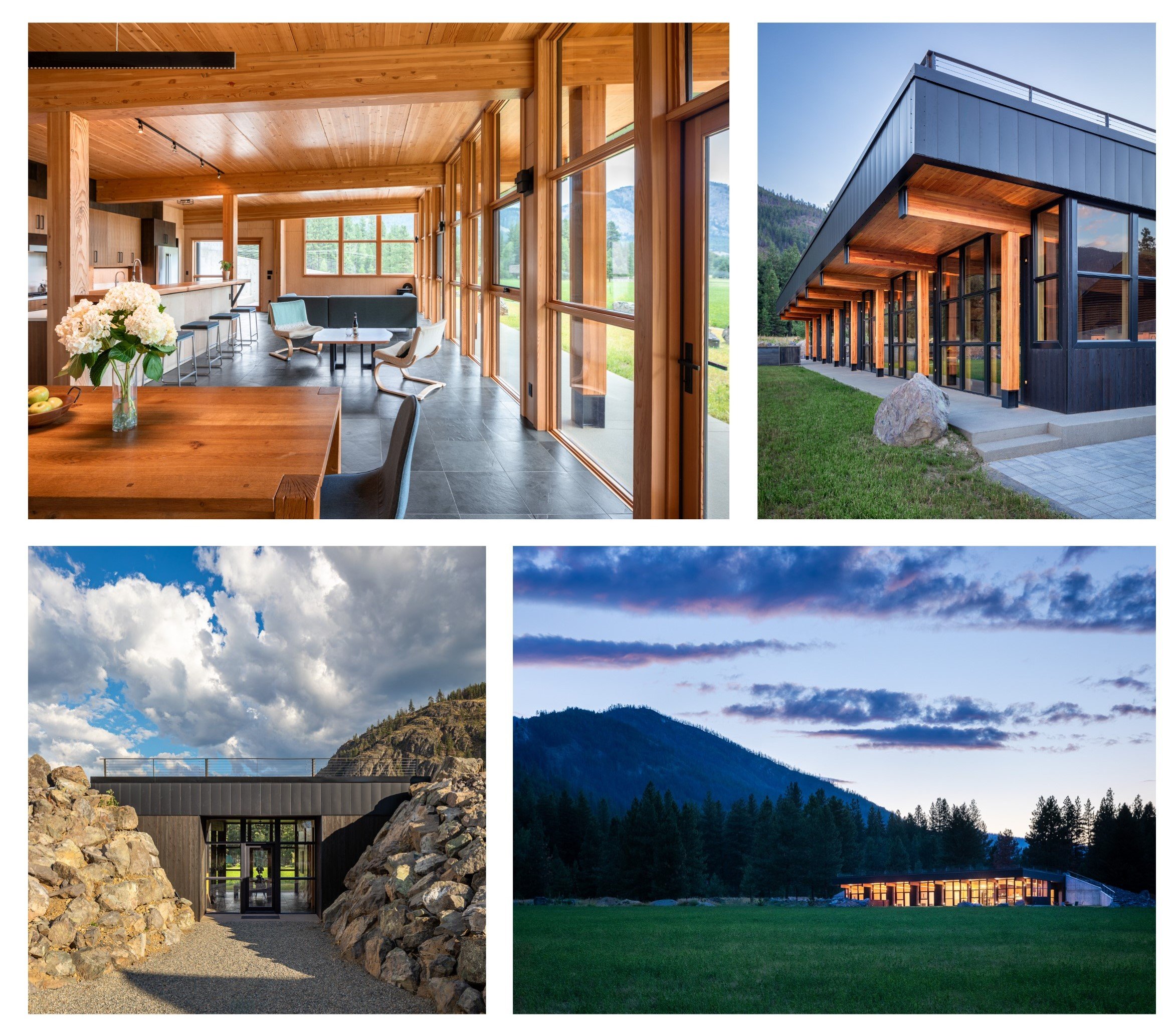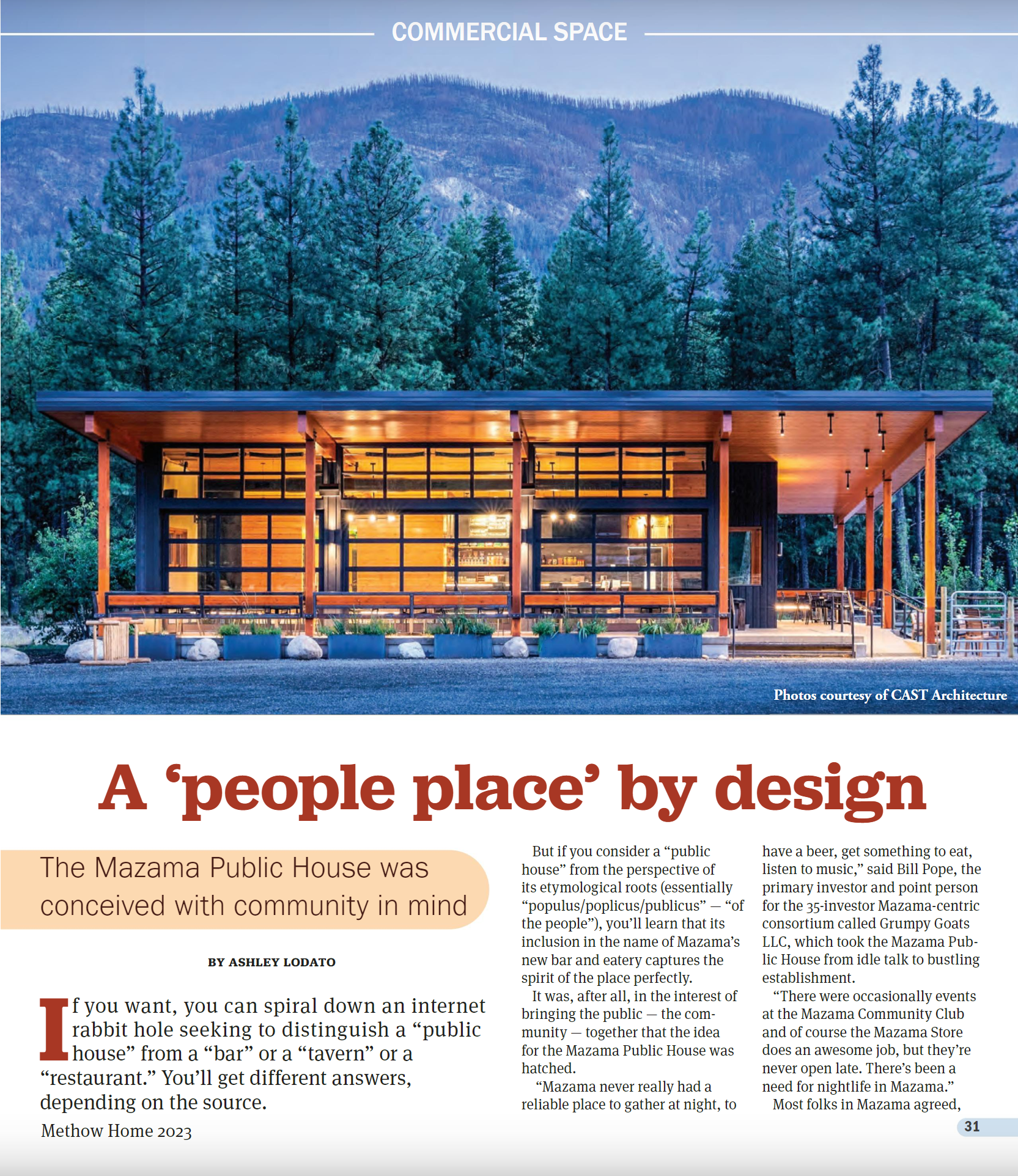New Sitka Cottage: 3-bedroom DADU
At 1,000 net square feet, the Sitka Cottage features three bedrooms and two baths upstairs, an open living room and kitchen, storage, and an additional powder room tucked away on the first floor. It fits flexibly on many sites with a walk-out terrace off the living room/kitchen. The three bedrooms upstairs are reasonably sized and work well for a family. Standard, wood-frame construction, vented shed roof, slab-on-grade foundation, careful placement of windows, and a simple exterior allow for low-cost construction without sacrificing durability, function, or style.
The design is under the height limit and can fit on standard to small lots, around trees, or on sloped lots, with space for adjacent parking if desired. The cottage can be oriented toward the principal residence for multi-generational living around a courtyard. The front door is on the corner and can be placed on either the short or long side of the design, depending on site orientation.
The design targets 4-Star Built Green, with details for reduced air infiltration, energy-efficient heating, cooling and water heating systems, passive solar heat gain in window/shading in summer, low-VOC finishes, no fossil fuel appliances, and all LED lighting.
See more at CASTcottages.com




















